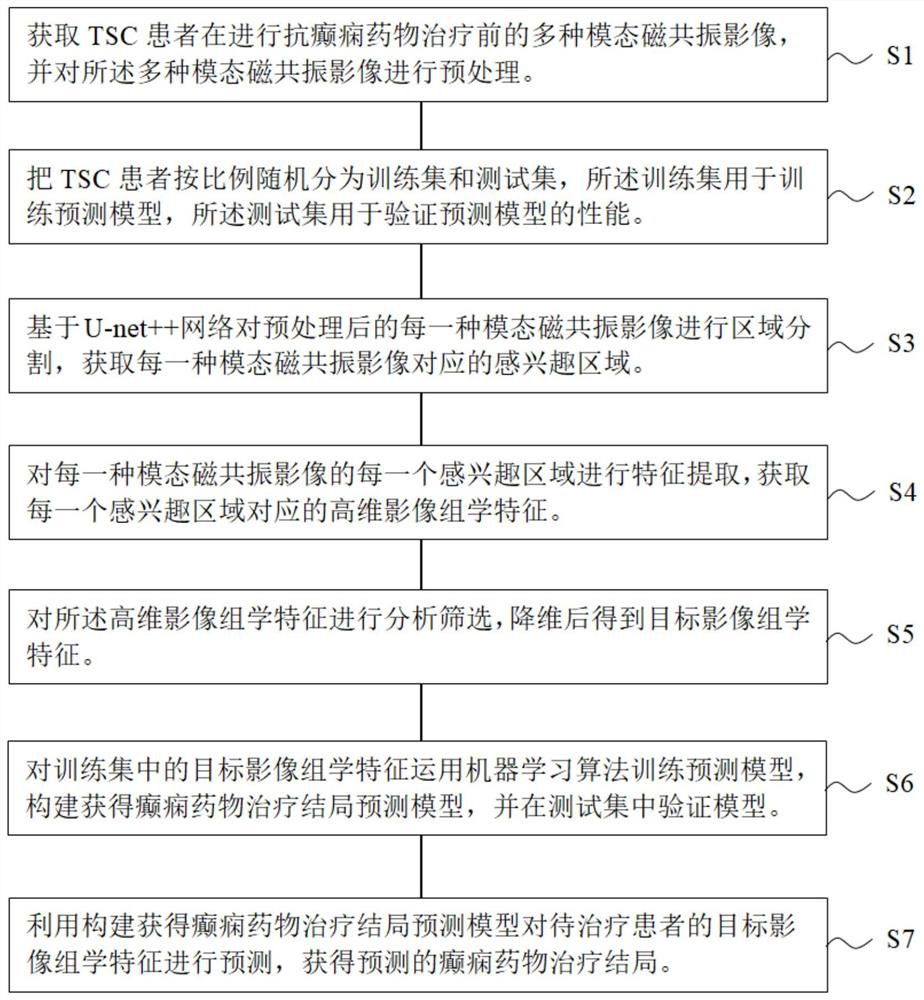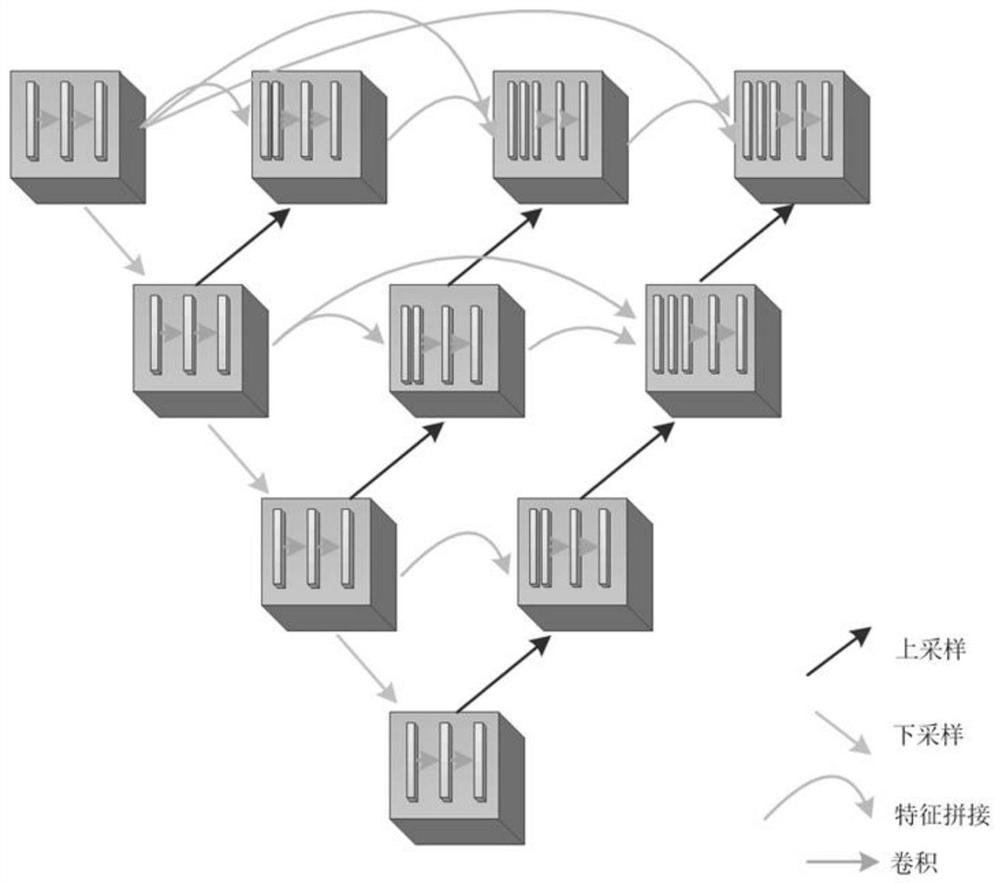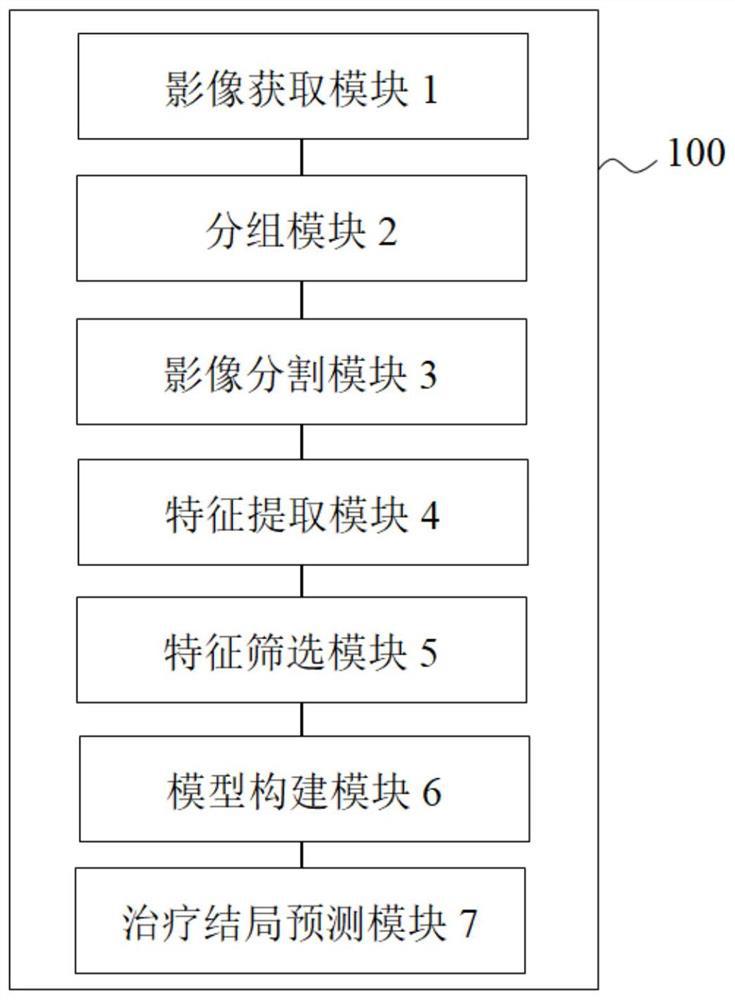Epilepsy drug treatment outcome prediction method and device based on multi-modal radiomics
A technology of radiomics and prediction methods, applied in medical science, diagnostic recording/measurement, sensors, etc., to reduce labor costs
- Summary
- Abstract
- Description
- Claims
- Application Information
AI Technical Summary
Problems solved by technology
Method used
Image
Examples
Embodiment 1
[0042] see figure 1 This embodiment provides a method for predicting the outcome of epilepsy drug treatment based on multimodal radiomics, which mainly includes constructing an epilepsy drug treatment outcome prediction model and using the constructed and obtained epilepsy drug treatment outcome prediction model to predict the patients to be treated. part.
[0043] Among them, the part of constructing the prediction model of epilepsy drug treatment outcome includes the following steps:
[0044] Step S1 , acquiring multiple modal magnetic resonance images of the TSC patient before antiepileptic drug treatment, and preprocessing the multiple modal magnetic resonance images.
[0045] In a specific embodiment of the present invention, the multiple modalities of magnetic resonance imaging include T1-weighted imaging (T1W), T2-weighted imaging (T2W) and fluid-attenuated inversion recovery imaging (FLAIR) in magnetic resonance imaging.
[0046] In a specific embodiment of the prese...
Embodiment 2
[0083] This embodiment provides an epilepsy drug treatment outcome prediction device based on multimodal radiomics, such as image 3 As shown, the device 100 includes an image acquisition module 1 , a grouping module 2 , an image segmentation module 3 , a feature extraction module 4 , a feature screening module 5 , a model building module 6 and a treatment outcome prediction module 7 . in,
[0084] The image acquisition module is used to acquire multiple modal magnetic resonance images of TSC patients before antiepileptic drug treatment, and to preprocess the multiple modal magnetic resonance images; work process.
[0085] The grouping module is used for randomly dividing TSC patients into a training set and a test set in proportion, the training set is used for training the prediction model, and the test set is used for verifying the performance of the prediction model; that is, step S2 in Embodiment 1 corresponds to work process.
[0086] The image segmentation module is ...
Embodiment 3
[0092] Based on the method for predicting the outcome of epilepsy drug treatment based on multimodal radiomics provided in the above embodiment, this embodiment provides a terminal device, such as Figure 4 As shown, the terminal device includes: a processor 10, a memory 20, an input device 30 and an output device 40, the processor 10 is provided with a GPU, and the number of the processors 10 may be one or more, figure 2 Take one processor 10 as an example. The processor 10, the memory 20, the input device 30 and the output device 40 in the terminal device may be connected by a bus or other means.
[0093] The memory 20, as a computer-readable storage medium, can be used to store software programs, computer-executable programs, and modules. The processor 10 executes various functional applications and data processing of the device by running the software programs, instructions and modules stored in the memory 20, that is, to realize the multimodal radiomics-based epilepsy d...
PUM
 Login to View More
Login to View More Abstract
Description
Claims
Application Information
 Login to View More
Login to View More - R&D
- Intellectual Property
- Life Sciences
- Materials
- Tech Scout
- Unparalleled Data Quality
- Higher Quality Content
- 60% Fewer Hallucinations
Browse by: Latest US Patents, China's latest patents, Technical Efficacy Thesaurus, Application Domain, Technology Topic, Popular Technical Reports.
© 2025 PatSnap. All rights reserved.Legal|Privacy policy|Modern Slavery Act Transparency Statement|Sitemap|About US| Contact US: help@patsnap.com



